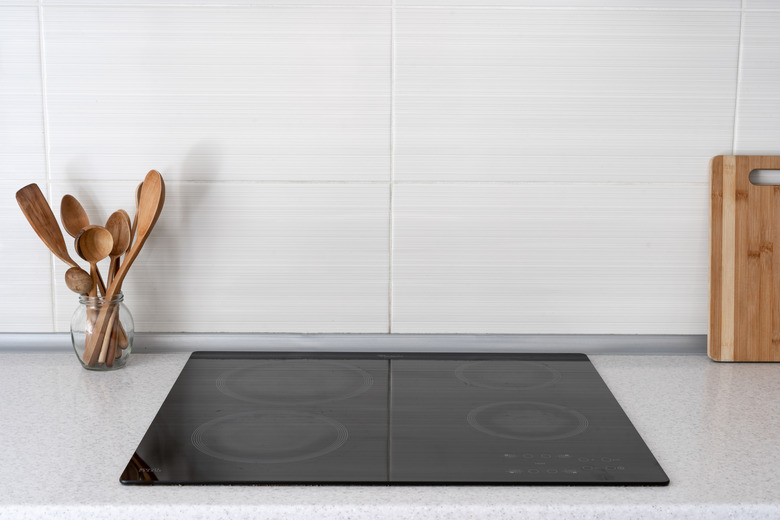Does Porcelain Enamel Cookware Work On A Glass Stovetop?
Glass-topped ranges are designed to withstand fairly high heat and have a flat top, rather than the raised coiled burners on a "classic" electric stove. Glass-topped ranges require some special care to ensure that they stay undamaged and scratch-free, including care in the choice of cookware. Porcelain cookware on a glass stove top is usually safe if it's used with care, but can significantly damage your cooktop if used incorrectly.
Enamel Pans on a Glass Top Stove
Enamel Pans on a Glass Top Stove
In order to keep that cooking surface shiny and undamaged, careful choice of cookware and careful cleaning are absolute necessities. A glass cook surface is delicate for one of the most heavily-used appliances in your home, so care for it appropriately. Choosing the wrong cookware can damage your cooking surface or even permanently ruin your cooktop. No matter what type of cookware your choose, never drag pots across the surface — dragging or pushing pots can irreversibly scratch or damage the surface.
Porcelain Enamel and Glass Ranges
Porcelain Enamel and Glass Ranges
Porcelain Enamel cookware can be used with care on glass cooktops, according to experts at GE, though stainless steel cookware is recommended. Cast iron cookware is not recommended, unless glazed with enamel or porcelain enamel. Bare cast iron will scratch a glass stovetop. Enamel/porcelain enamel, if overheated, will melt and actually fuse to the cooking surface, so that the whole stovetop must be replaced. In order to safely use porcelain enamel on a glass stovetop, don't turn the heat up to its highest setting — go no more than three-fourths of the way to "high" and never let a pot or pan boil dry.
Porcelain Enamel Canners
Porcelain Enamel Canners
Many hot water baths and canners are built using porcelain enamel. When deciding to use a canner on a glass range, you're faced with another issue — heating your food to a safe temperature. Most glass ranges have a built-in sensor that turns the burner off as it heats to high temperatures, to avoid creating a temperature greater than the tolerance of the glass. The burner will thus turn off and on repeatedly when cooking at the higher temperatures required for canning. This uneven heating is not sufficient to keep the temperature above that required to can foods safely.
If you do use a porcelain enamel canner on your glass-topped stove, use only one with a flat bottom. The flat bottom conducts heat more evenly and increases your chances of maintaining the required temperature. Make sure your canner has enough water in it before you begin processing your jars, or you may find your porcelain enamel canner fused to your expensive glass cooktop. Even the "flat-bottomed" solution may not be sufficient depending on the canner; look for a canner that explicitly works on a glass-topped stove and/or contact the manufacturer to find out whether your canner is safe to use on a glass cooktop.
Another solution is to cook your food on the glass-topped range, but heat your canner on a camp stove that can fully heat your canner at a steady temperature.
Induction Stove Tops
Induction Stove Tops
Some glass stove tops use induction, rather than a conventional heating coil, to heat the pot. Induction uses a magnetic field to generate heat, so any pots you wish to use must contain enough iron to respond to magnetism. If you're buying new, check the packaging for any mention of induction compatibility. If you have existing enamel cookware, simply apply a magnet to the pot. If it sticks, the pot will work with induction.
